Menu
Physics Lesson 16.3.2 - The Direction of Magnetic Force. Fleming's Left Hand Rule
Please provide a rating, it takes seconds and helps us to keep this resource free for all to use
Welcome to our Physics lesson on The Direction of Magnetic Force. Fleming's Left Hand Rule, this is the second lesson of our suite of physics lessons covering the topic of Magnetic Force on a Current Carrying Wire. Ampere's Force, you can find links to the other lessons within this tutorial and access additional physics learning resources below this lesson.
The Direction of Magnetic Force. Fleming's Left Hand Rule
The direction of magnetic force calculated through the formula of Ampere's Force is found by using the so-called "Fleming's Left Hand Rule". It consists of three steps:
- The left hand is completely open; the thumb forms an angle of 90° to the other four fingers.
- The four fingers show the current direction.
- The magnetic field lines punch the open palm.
If these three rules are applied properly, then the thumb shows the direction of magnetic force, as shown in the figure.
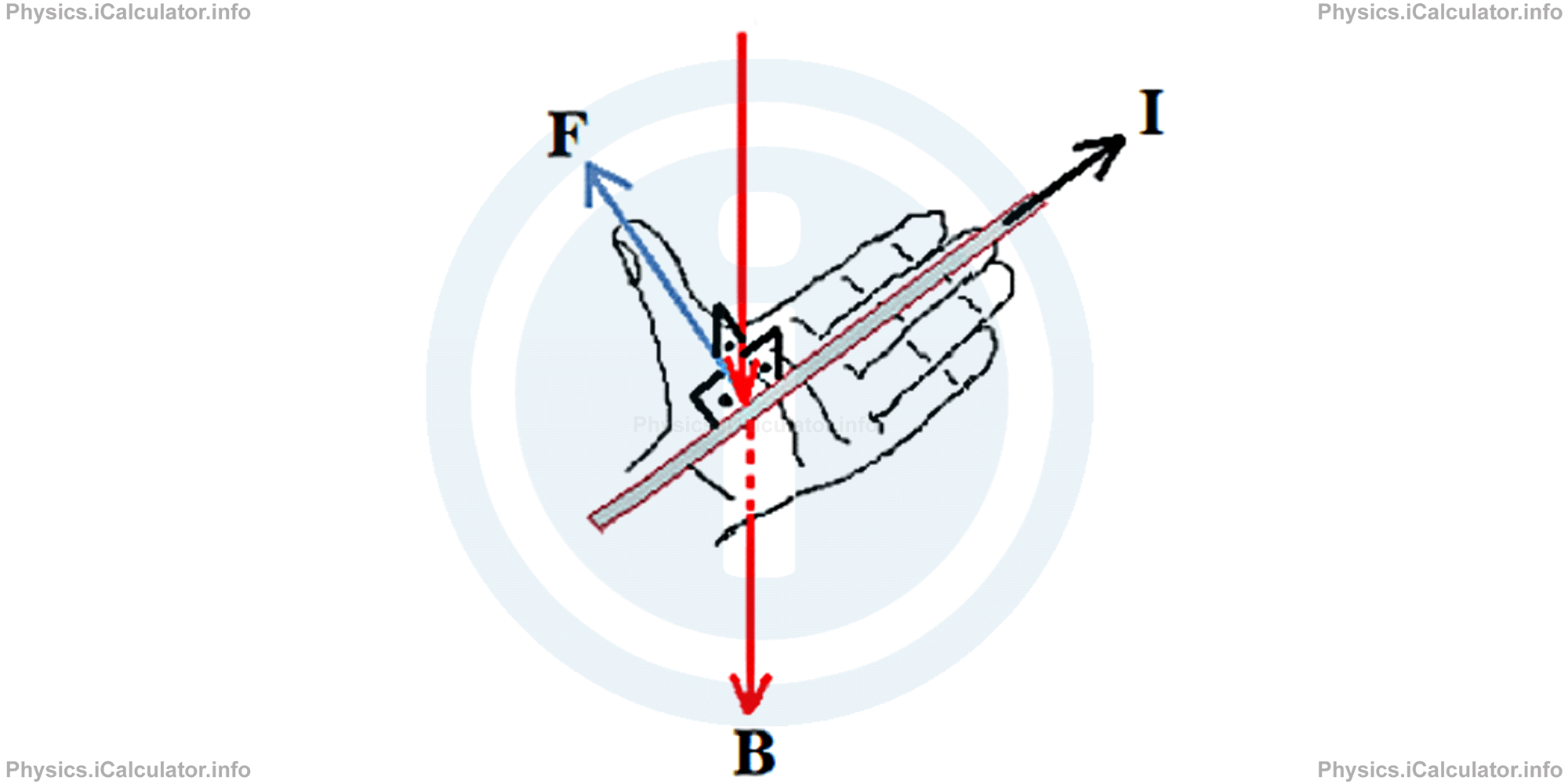
There are two other versions of left hand rule application as well. One is the three fingers version (FBI) where the thumb shows the force, the index finger the direction of magnetic field and the middle finger the current, as shown in the figure below.
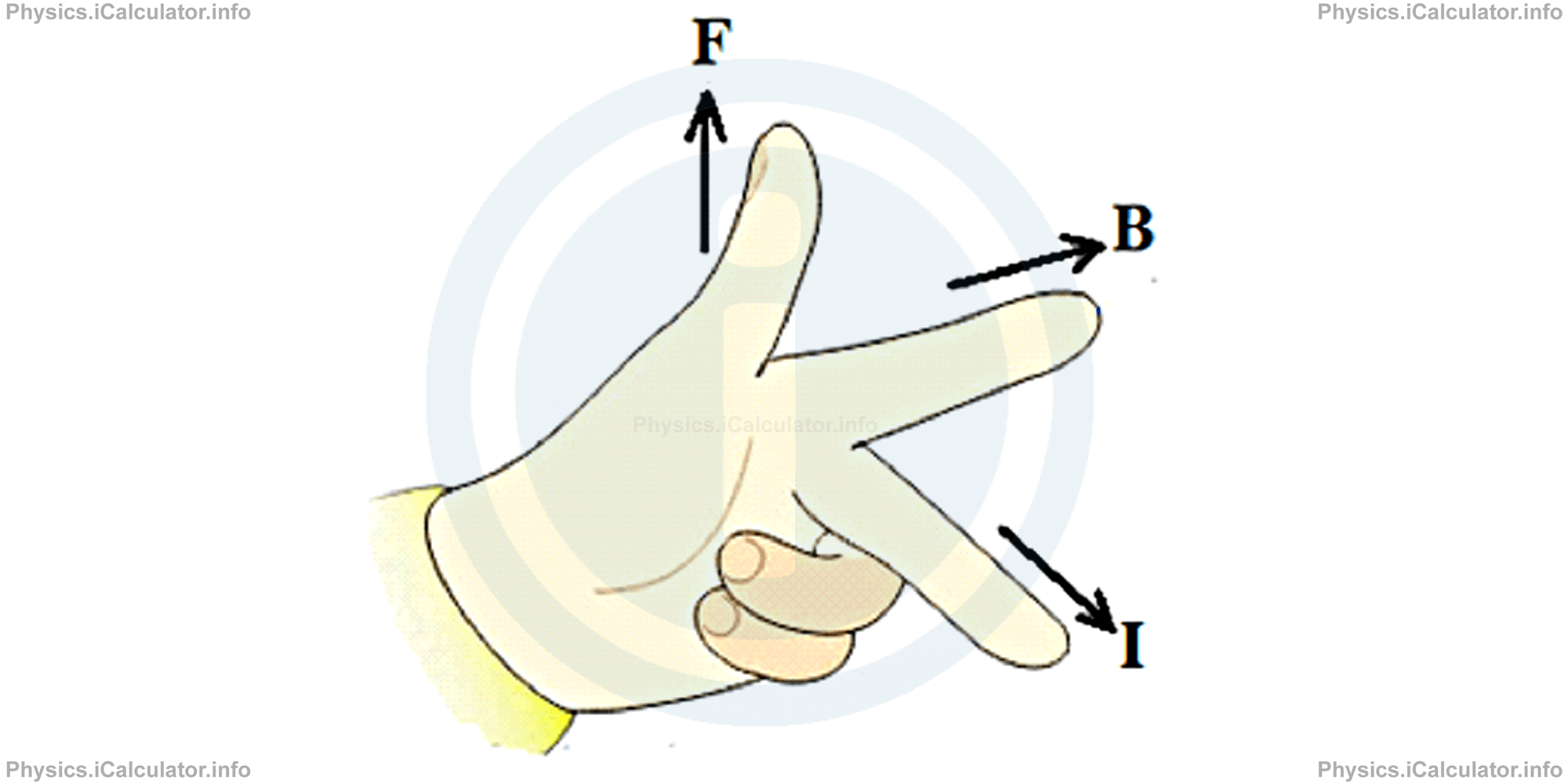
The other version is the following one:
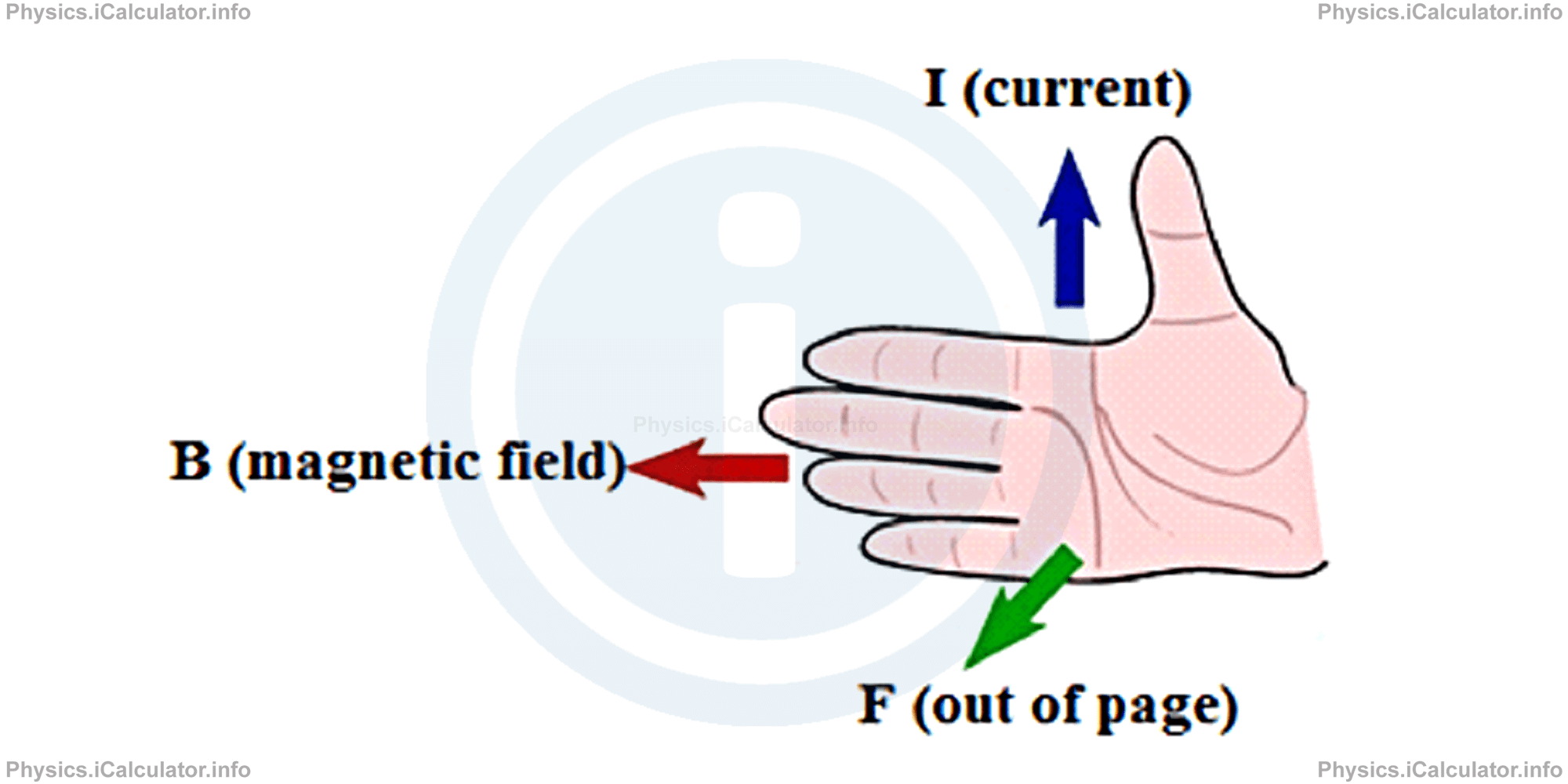
Henceforth we will use the first version of Fleming's LHR in all situations to avoid confusion.
Example 1
The electric circuit shown in the figure below produces a 3A current when the switch is closed. The circuit is placed normal to a uniform magnetic field of induction equal to 5 mT. A 20 cm metal bar is placed perpendicular with the two horizontal circuit sides. The switch is initially open. Then, it turns ON for a very short time and is switched off again.
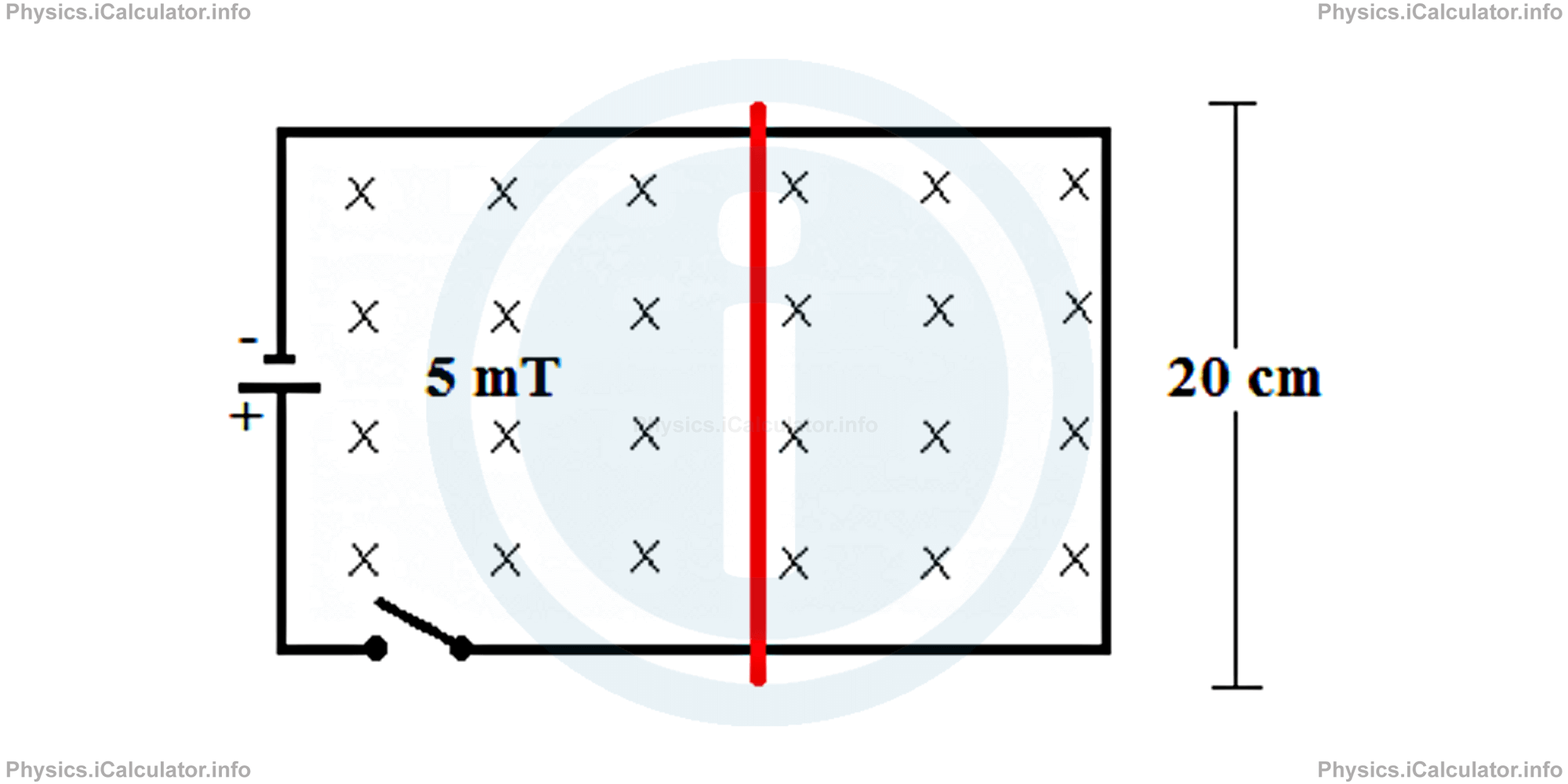
- What is the moving direction of the metal bar immediately after the switch is open?
- What is the magnitude of magnetic force produced on the bar? Suppose almost all the current flows only through the bar when the circuit is open.
- What is the mass of the bar if it starts accelerating from rest at 0.2 m/s2 when the switch turns on?
Solution 1
- The cross symbols mean the magnetic field lines enter the page normal to it. Thus, the palm must be directed out of page.
Electric current flows in the anticlockwise direction when the switch is open. This means the current in the bar flows in the down-up direction, so the four fingers will be directed upwards.
From here, we can find the direction of the magnetic force applying the Fleming's Left Hand Rule. Putting the hand in the required direction, we find that the magnetic force shown by the thumb acts due left.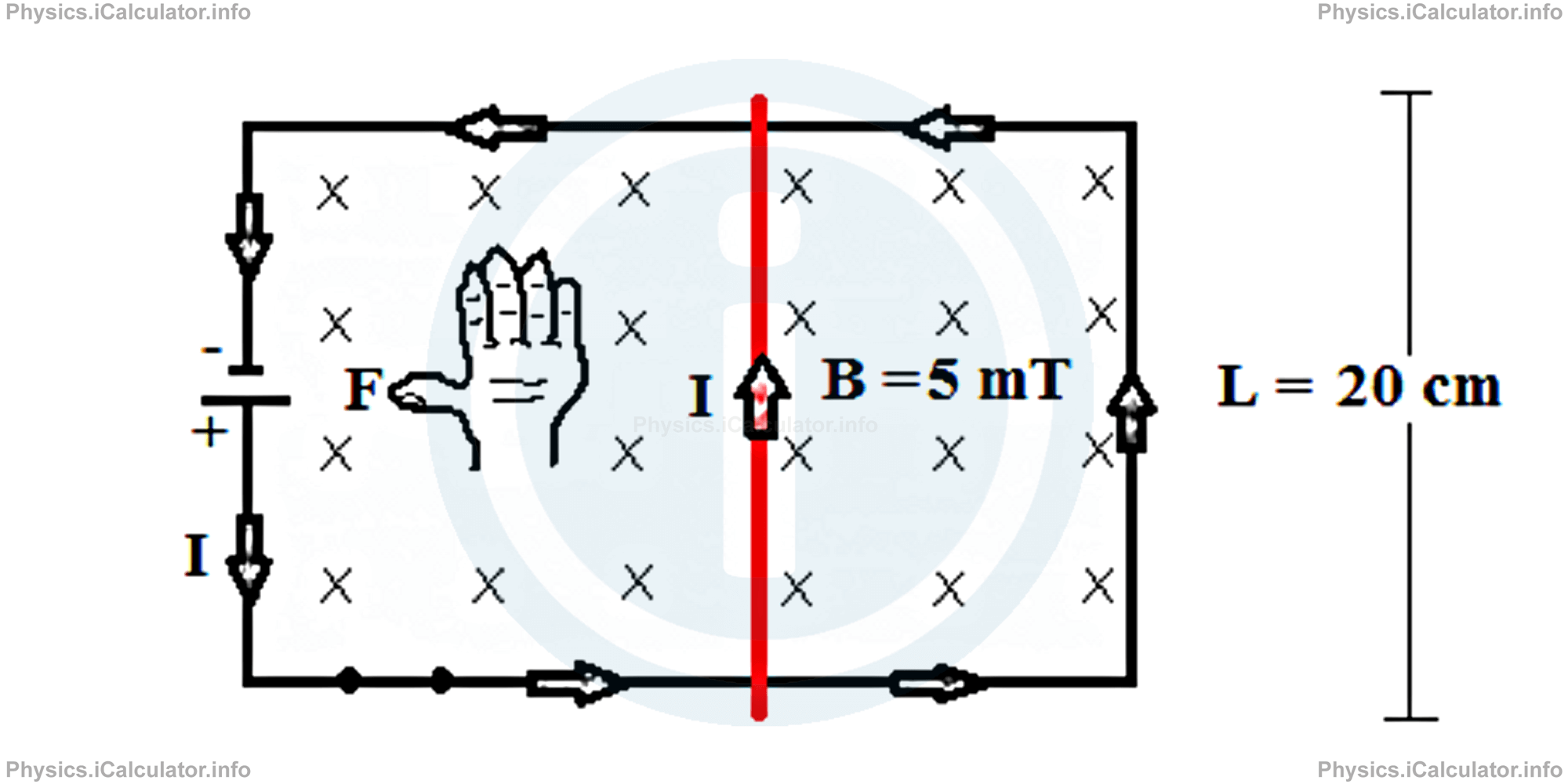
- Clues:
I = 3A
B = 5 mT = 0.005 T
L = 20 cm = 0.20 m
F = ?
From the formula derived from the Fleming's Left Hand Rule (the scalar version), we obtainF = I ∙ L ∙ B ∙ sinθwhere sin θ = 1 because all components of the formula are perpendicular to each other (sin 90° = 1). Thus, substituting the values, we obtainF = (3A) ∙ (0.20m) ∙ (0.005T) ∙ 1
= 0.003 N - From the Newton's Second Law of Motion, we have a = F/mwhere m is the mass of the conducting rod, F is the magnetic force acting on the rod and a is its acceleration. Therefore, rearranging the above formula we obtain for the mass m of the rod:m = F/a
= 0.003 N/0.2 m/s2
= 0.015 kg
= 15 g
The same procedure is also used when the angle between the current and magnetic field lines is not 9°. Let's consider an example.
Example 2
A current carrying bar is used to connect two detached parts of an electric circuit as shown in the figure.
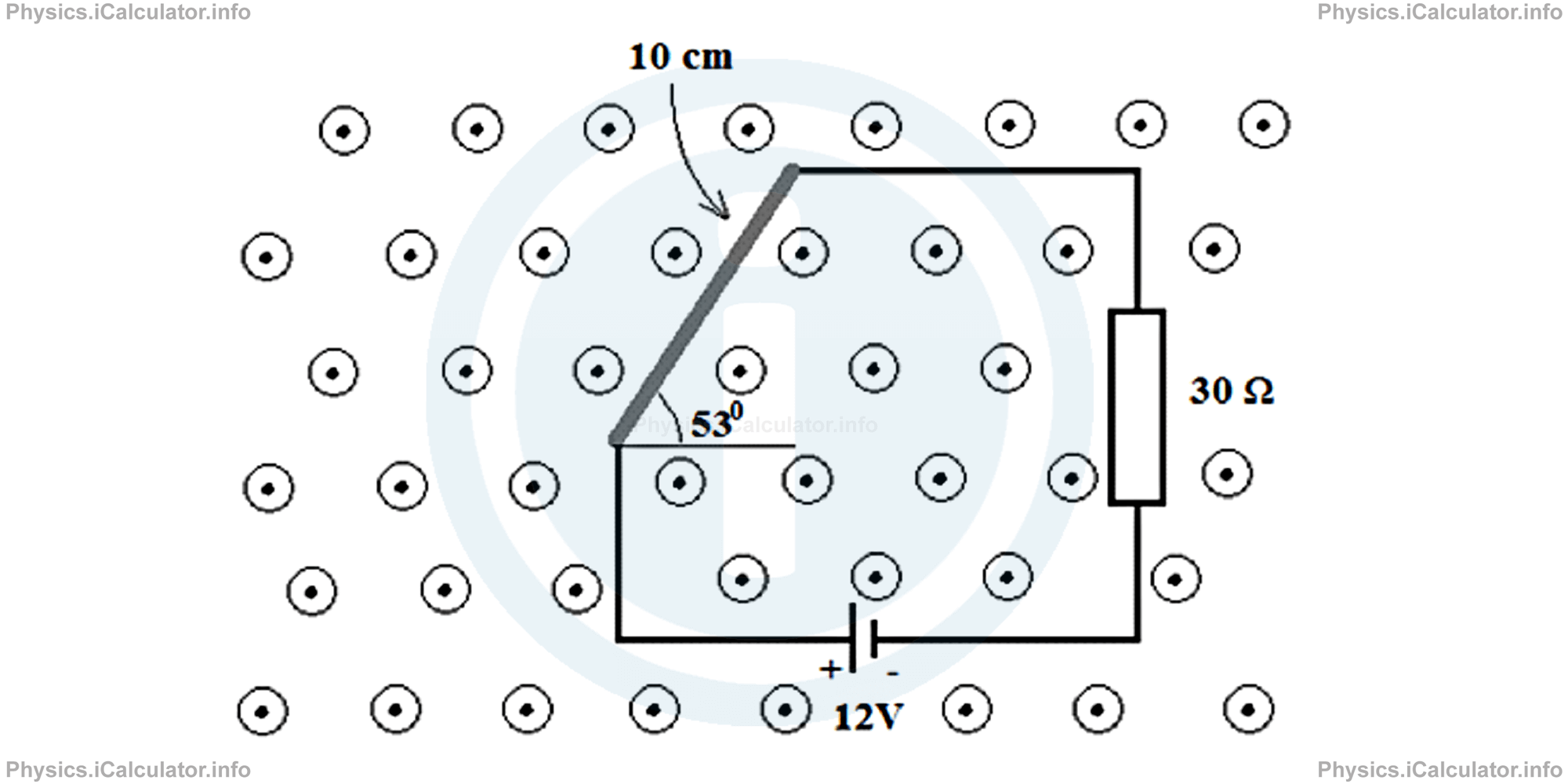
What are the horizontal and vertical components of magnetic force acting on the bar if the value of magnetic induction is 20 mT?
Solution 2
The direction of magnetic field is out of the page, normal to its plane. In addition, the value of electric current flowing through the circuit (and therefore through the metal bar) is calculated applying the Ohm's Law where ε = 12 V and R = 30 Ω. Therefore, we obtain for current:
= 12 V/30 Ω
= 0.4 A
The direction of magnetic field is still perpendicular to the current, regardless the angle shown in the figure. This is because the electric current lies according the plane of the figure while magnetic field is normal to it. Therefore, we have for the magnitude of magnetic force produced:
where sin θ = 1 because L and B of are perpendicular to each other (sin 90° = 1). Thus, giving that L = 10 cm = 0.10 m and B = 20 mT = 0.020 T, we obtain after substitutions
= 0.0008 N
Using the Fleming's left hand rule (the palm is directed onto the page, the four fingers are in the up-right direction) the magnetic force shown by the thumb is directed inwards the circuit perpendicular to the bar. The horizontal component Fx of the magnetic force is
= 0.0008 N ∙ cos370
= 0.0008 N ∙ 0.8
= 0.00064 N (due right)
and the vertical component Fy of the magnetic force is
= 0.0008 N ∙ sin370
= 0.0008 N ∙ 0.6
= 0.00048 N (down)
The figure below shows these magnetic force components.
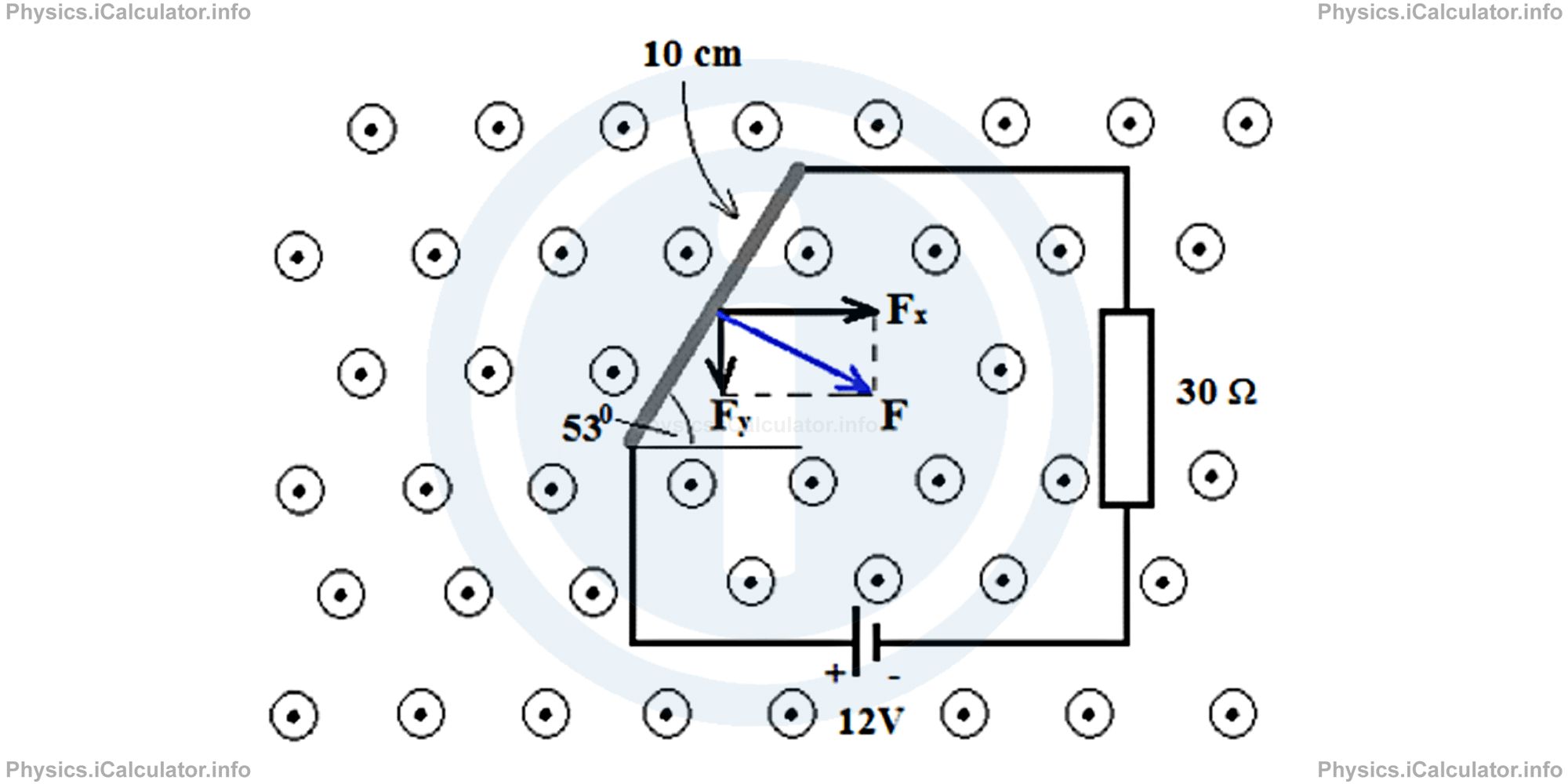
You have reached the end of Physics lesson 16.3.2 The Direction of Magnetic Force. Fleming's Left Hand Rule. There are 5 lessons in this physics tutorial covering Magnetic Force on a Current Carrying Wire. Ampere's Force, you can access all the lessons from this tutorial below.
More Magnetic Force on a Current Carrying Wire. Ampere's Force Lessons and Learning Resources
Whats next?
Enjoy the "The Direction of Magnetic Force. Fleming's Left Hand Rule" physics lesson? People who liked the "Magnetic Force on a Current Carrying Wire. Ampere's Force lesson found the following resources useful:
- Flemings Left Hand Rule Feedback. Helps other - Leave a rating for this flemings left hand rule (see below)
- Magnetism Physics tutorial: Magnetic Force on a Current Carrying Wire. Ampere's Force. Read the Magnetic Force on a Current Carrying Wire. Ampere's Force physics tutorial and build your physics knowledge of Magnetism
- Magnetism Revision Notes: Magnetic Force on a Current Carrying Wire. Ampere's Force. Print the notes so you can revise the key points covered in the physics tutorial for Magnetic Force on a Current Carrying Wire. Ampere's Force
- Magnetism Practice Questions: Magnetic Force on a Current Carrying Wire. Ampere's Force. Test and improve your knowledge of Magnetic Force on a Current Carrying Wire. Ampere's Force with example questins and answers
- Check your calculations for Magnetism questions with our excellent Magnetism calculators which contain full equations and calculations clearly displayed line by line. See the Magnetism Calculators by iCalculator™ below.
- Continuing learning magnetism - read our next physics tutorial: Magnetic Force on a Wire Moving Inside a Magnetic Field. Lorentz Force
Help others Learning Physics just like you
Please provide a rating, it takes seconds and helps us to keep this resource free for all to use
We hope you found this Physics lesson "Magnetic Force on a Current Carrying Wire. Ampere's Force" useful. If you did it would be great if you could spare the time to rate this physics lesson (simply click on the number of stars that match your assessment of this physics learning aide) and/or share on social media, this helps us identify popular tutorials and calculators and expand our free learning resources to support our users around the world have free access to expand their knowledge of physics and other disciplines.
Magnetism Calculators by iCalculator™
- Angular Frequency Of Oscillations In Rlc Circuit Calculator
- Calculating Magnetic Field Using The Amperes Law
- Capacitive Reactance Calculator
- Current In A Rl Circuit Calculator
- Displacement Current Calculator
- Electric Charge Stored In The Capacitor Of A Rlc Circuit In Damped Oscillations Calculator
- Electric Power In A Ac Circuit Calculator
- Energy Decay As A Function Of Time In Damped Oscillations Calculator
- Energy Density Of Magnetic Field Calculator
- Energy In A Lc Circuit Calculator
- Faradays Law Calculator
- Frequency Of Oscillations In A Lc Circuit Calculator
- Impedance Calculator
- Induced Emf As A Motional Emf Calculator
- Inductive Reactance Calculator
- Lorentz Force Calculator
- Magnetic Dipole Moment Calculator
- Magnetic Field At Centre Of A Current Carrying Loop Calculator
- Magnetic Field In Terms Of Electric Field Change Calculator
- Magnetic Field Inside A Long Stretched Current Carrying Wire Calculator
- Magnetic Field Inside A Solenoid Calculator
- Magnetic Field Inside A Toroid Calculator
- Magnetic Field Produced Around A Long Current Carrying Wire
- Magnetic Flux Calculator
- Magnetic Force Acting On A Moving Charge Inside A Uniform Magnetic Field Calculator
- Magnetic Force Between Two Parallel Current Carrying Wires Calculator
- Magnetic Potential Energy Stored In An Inductor Calculator
- Output Current In A Transformer Calculator
- Phase Constant In A Rlc Circuit Calculator
- Power Factor In A Rlc Circuit Calculator
- Power Induced On A Metal Bar Moving Inside A Magnetic Field Due To An Applied Force Calculator
- Radius Of Trajectory And Period Of A Charge Moving Inside A Uniform Magnetic Field Calculator
- Self Induced Emf Calculator
- Self Inductance Calculator
- Torque Produced By A Rectangular Coil Inside A Uniform Magnetic Field Calculator
- Work Done On A Magnetic Dipole Calculator